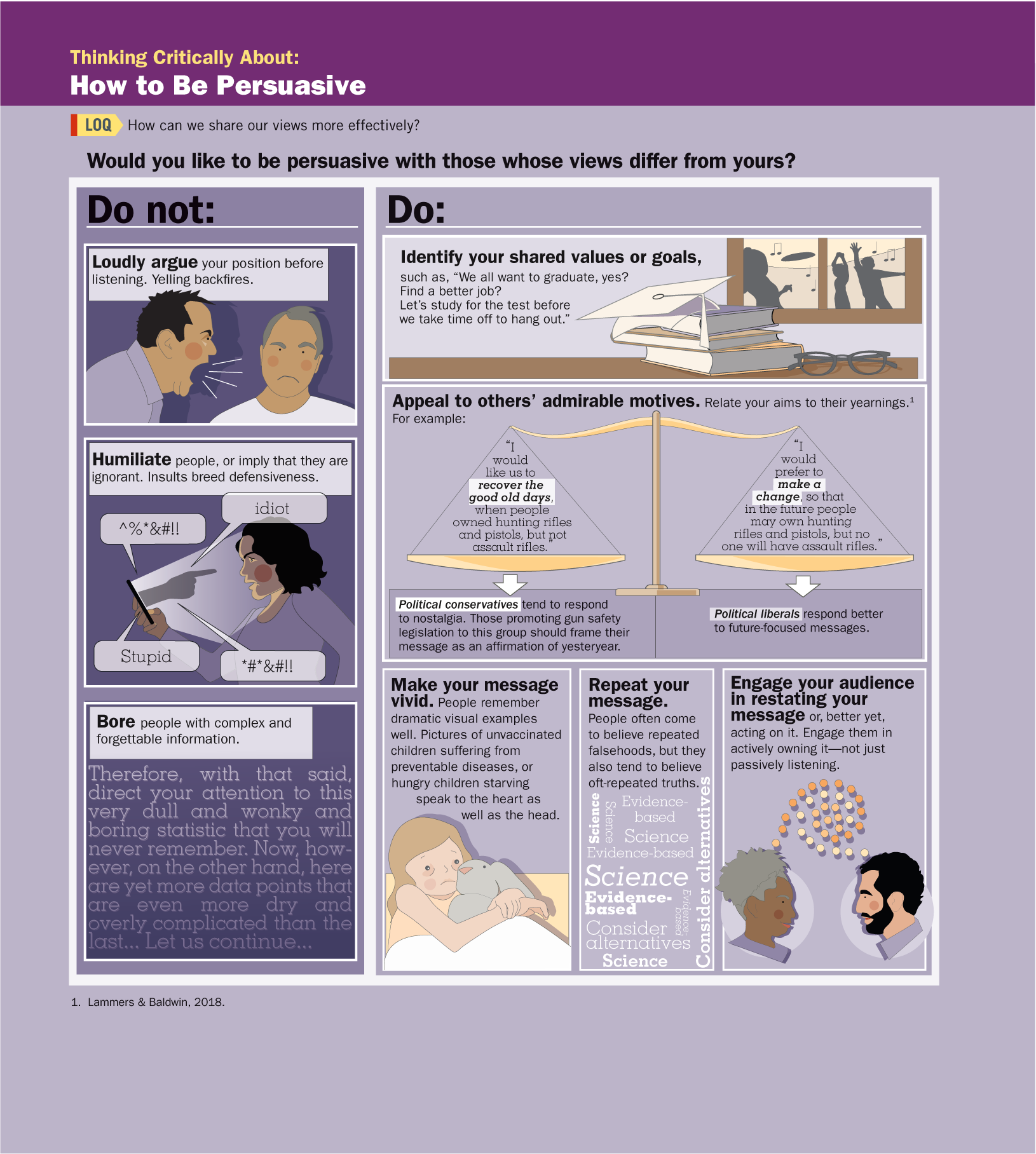Chapter 15. How to Be Persuasive
Infographic
Infographic Activity
by David Myers and Nathan DeWall
true
true
Thinking Critically About: How to Be Persuasive
We witness many different styles of communicating, from quiet sharing to angry exchanges. Which styles are most effective? (This infographic is from Psychology in Everyday Life, 5th Edition, Chapter 11.)
Quiz
Quiz
Question 15.1
1eeFOD6rxpxpRj4q3cQMBfLk0rn5Bsm0Cf0PheHkdJGzBUT5SQVnjGjxlqd6MIAZp1secjRDvnbHy0C4ZzbSS7J5Eq2XDqeSfNtGqEBWLo+axsGdvcYrukSL/IlnXKzt0eqHQwxEXOpIw1WDpLk88rbeefhdm0Xg7yXCNXFAXX7Yzaq68ESETuLzqSs=Yes. We typically accomplish nothing, and generally make others more defensive, when we are disrespectful—by talking intensely before listening, or by insulting them for holding a different view. And we turn people away if they are bored or confused by dull or overly complex information.
Question 15.2
YFMNN0baYtaKRN1AU5Yhqjoo5qQbz97Ezj+XgABO0Ac1I5BuhIM7vjFGcLcamMhQNUiRLw/xQ8mc1i1XMoR2cr/UxdV6iaAw7K/pJ7decZF6RqBXJP9piQL5TwQ=Effective communicators identify values and goals that they and their target audience share—and show how those values and goals support the proposed position. They may also connect their message to their recipients’ praiseworthy, preexisting ideals.
Question 15.3
wvkFQjPkX30YWQ7xmVub3J350iYyYNn9+ElMGZcOKdSqT1VCkHxKmuTPJJOmezZupSOtAkI1E3Wo3Zn38R3f9Iy0febobxlJLXyxF0aGtM6PuUQen1ZySmJp0eA=Yes. Use vivid, hard-to-forget examples. Repeat the message often. And get the audience to rehearse or restate it.
